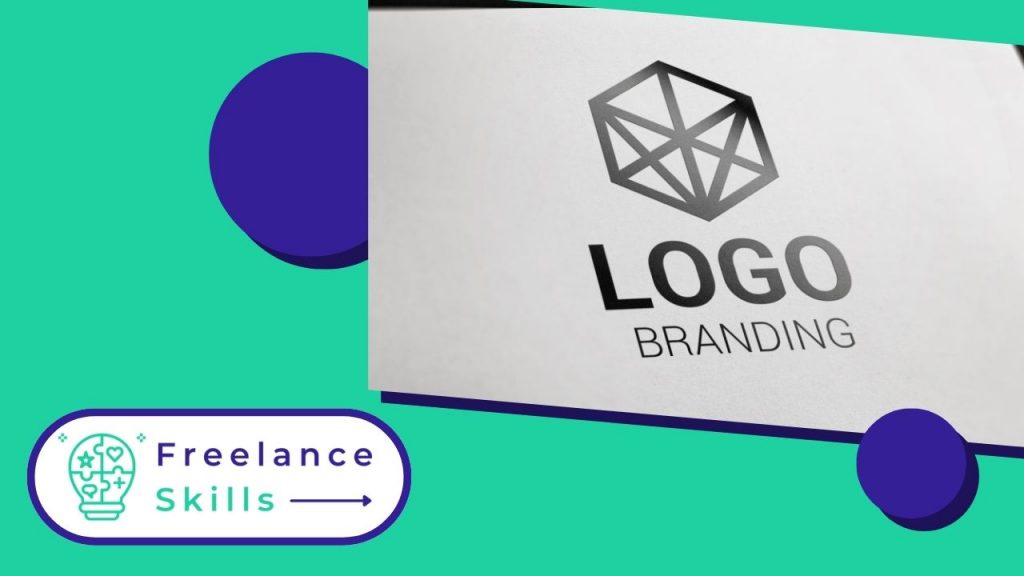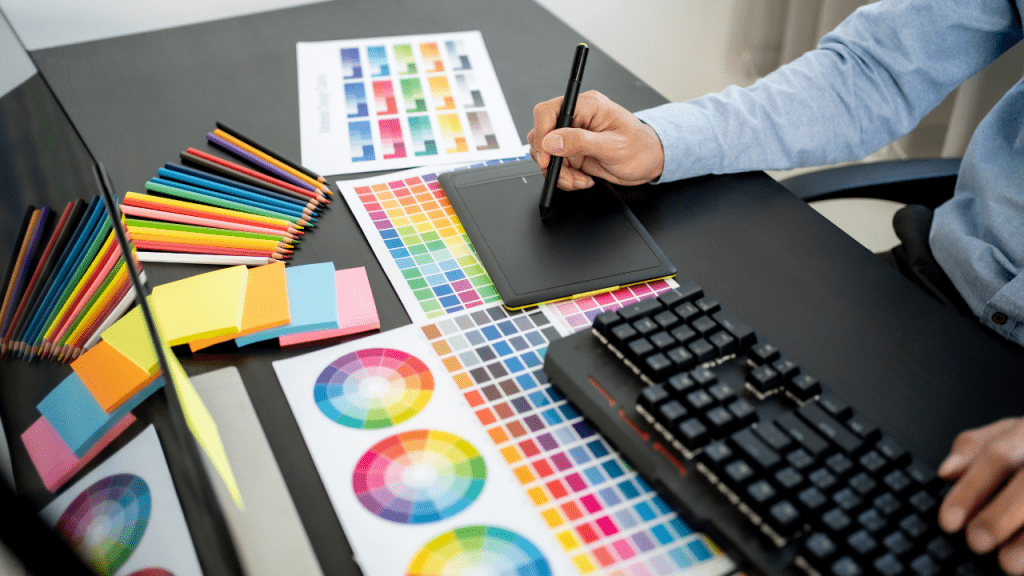The visibility of your brand depends on your logotype. The logotype is the logo that makes the difference between you and others. For it to work, it must be unique and completely customizable. Today, vectors are a great way to create icons and logos that convert. A vector is an image that can be scaled without loss of quality, which is perfect for creating your company logo.
Vectorizing a logo involves converting your design into a vector format. It helps you maintain the scalability of your designs, allowing you to easily modify them at any time without losing quality. This means it can be scaled up or down without losing detail, unlike raster images (bitmap files). Would you like to know how to vectorize a logo? Use this article as a guide.
A vectorized logo: What is it?
A vectorized logo is a version of the logo created using vector graphics design software, such as Adobe Illustrator or CorelDRAW. Unlike pixel-based images, vectorized logos are made up of mathematically defined lines and curves, known as vectors. This method produces sharp, resizable images with no loss of quality, regardless of the size to which they are enlarged or reduced.
.
Vectorized logos are ideal for use in a variety of media, including printing on large formats such as billboards or posters, as well as digital media such as websites. Their ability to maintain sharpness and clarity of detail makes them indispensable for ensuring a consistent, professional representation of a company’s or brand’s visual identity.
Why vectorize a logo?
Vectorizing a logo is a crucial step in ensuring its quality and versatility in a variety of graphic and digital contexts.
Precision and Scalability
Vectorizing a logo transforms it into an image based on mathematical vectors rather than pixels. This means the logo can be resized at will without losing quality. Whether you’re printing on small objects like pens or large media like advertising banners, the quality remains constant.
Adaptability to all Formats
It’s easy to convert vector files into various formats, such as SVG, EPS or PDF, which are widely used for professional printing and the web. This ensures that your logo will always appear crisp and sharp, whatever the medium or display size.
Easy Modification
A vectorized logo is also easier to modify. Elements such as colors, shapes and sizes can be adjusted quickly and precisely, which is essential for adapting to changes in your brand or the specific requirements of different projects.
Optimal web performance
On the Internet, where loading speed and device compatibility are essential, vector files ensure optimum performance. They load faster and adapt easily to different types of screens and resolutions.
Vector files ensure optimum performance on the web, where loading speed and device compatibility are essential.
Durability and Professionalism
Finally, vectorization guarantees the durability of your logo. By using a format that avoids pixelation and distortion, you maintain a consistent, professional image of your brand across all your visual communications.
How to vectorize a logo ?
Creating a vector logo is no easy task. In fact, to vectorize a logo, it’s not enough to create it in software like Photoshop or Adobe Illustrator. Changing the extension of a raster file and hoping that it will work isn’t an option either.
In fact, converting a logo to .png, .ai or .eps format isn’t enough to give your file the features you want. It’s much more complicated than that. Like in the kitchen, for example, just because you have all the ingredients and cooking utensils doesn’t mean the meal will cook itself. You need to be able to combine the ingredients in the right way and at the right dosage to cook a good meal. This also applies to logo vectorization.
To be able to convert your logo from raster to vector format, you need to juxtapose every shape, line and color of your logo to make an identical copy. You’ll need desktop publishing (DTP) software such as Adobe Photoshop, Adobe Illustrator or Corel Draw. Once your logo has been vectorized, you can save it in one of three vector formats, such as .svg, .ai, .eps or .pdf.
What graphics software should you use to vectorize a logo ?
To vectorize your logo raster files, there are suitable software packages and various steps to do it quickly and automatically. Although there are several online programs that allow you to vectorize your logo easily, there are more powerful graphics software programs that can give you more professional results.
Adobe Illustrator: a powerful tool for vectorizing a logo
Adobe Illustrator offers various commands and options for vectorizing any type of file (images, logos, icons, etc.). Used by many designers, it’s a high-performance tool for professional, precise vectorization.
To vectorize a logo in Illustrator, here are the steps to follow:
- Import the raster file to be vectorized by choosing File > Import.
- Use the ” Selection “ tool to choose your logo
- Click on ” Window “ then click on ” Vectorize image “ on the right-hand side of the document.
- Adjust the vectorization result until you get the desired result, by clicking on ” Vectorize image “.
- All you have to do now is save your vectorized logo, and you’re done !
Adobe Photoshop: A graphics software solution with vectorization options
In contrast to Adobe Illustrator, which is a vectorization software solution, Photoshop is not. If you’re using the latest version of the software, it’s really a software solution for retouching images with a rather enveloping vectorization option.
To vectorize a logo with this tool much prized by designers, here are the steps to follow :
- Import your logo into Photoshop from the File > Open menu.
- Click on Select > Select subject. This option will intelligently select your logo for you to work with.
- To set all the tonal zones of the logo, use the ” Color range “ option.
- Fine-tune your work and save the final result. That’s it !
To conclude, vectorizing a logo is, for some, quite a complex task. That’s why many companies opt for the services of professionals for the logo creation, vectorization or animation of their logo.
If you have any doubts about whether your logo’s particular design matches your brand identity, consider working with a designer. For this, it’s best to hire a freelancer on BeFreelancr. This will enable you to save time, focus on your activities and thus optimize your production.
Vous avez aimé cet article ? Aidez-nous en mettant 5 étoiles !
Your page rank:









